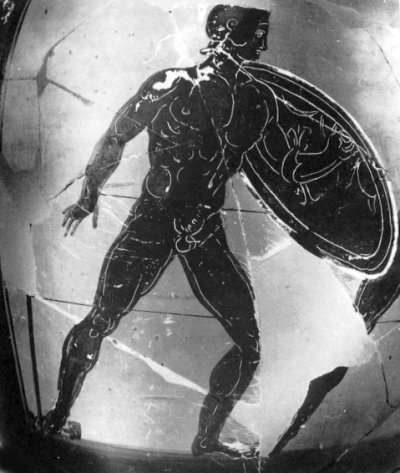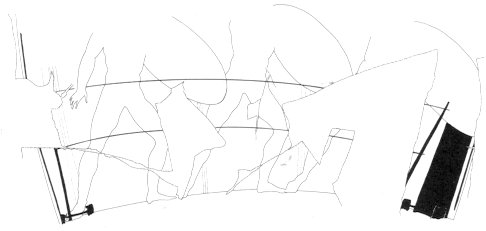Hysplex
Today, we learn how to start a foot race. The University of Houston's College of Engineering presents this series about the machines that make our civilization run, and the people whose ingenuity created them.
In the early days of Greek foot-racing, starting the runners was a big problem. They had nothing so abrupt as a gunshot to signal a start. And runners faced a nasty dilemma: if they started early they'd be flogged. If they didn't, they'd lose the race.
Now an odd book by Panos Valavanis. Hysplex: The Starting Mechanism in Ancient Stadia. Into this dense research monograph Valavanis pours the detective skills of a historian, an archaeologist, a linguist and an engineer. And it's all to answer the seemingly minor question, "How did the Greeks start a foot race?"
The question does summon up a rich web of metaphor. Starting the race was like a birth - beginning the race of life itself. Starting together meant concord and unanimity. And so on.
Two new words, balbis and hysplex, begin appearing as literary metaphors in the fifth century BC. While writers say nothing about starting mechanisms, balbis appears to refer to a stone gutter across the racetrack. It positions runners' feet at the start. We can see those balbes today in ancient arenas.
The word hysplex is harder to pin down. It has to do with starting, but what was its function? Valavanis eventually finds writers who speak of the hysplex falling. That clue finally makes sense when he finds a broken amphora from 344 BC. On it is a picture of runners, standing in the balbis. The picture is broken, but fragments of the starting mechanism remain. Combining what he sees on the Amphora, with remains in the old stadiums, he finally pieces together how the hysplex worked.
At either end of the balbis gutter was a vertical post. A twisted rope within the balbis served as a spring, it normally held the post flat against the ground. The posts were then hauled up to a vertical position and held in place against the spring by a trigger. A cord, stretched between the posts at chest height, was the starting barrier. When a starter, behind the runners, jerked the trigger cords, the posts snapped downward throwing the barrier cord to the ground in front of the runners. And the game was afoot!
Stephen Miller, who translated Valavanis' study, adds an appendix telling how he himself built an entire hysplex apparatus and staged foot races to test it. His photos show how the cords spring away from the runners' chest. The start is flawless. Miller even lists the cost of building his hysplex. It came to a third of a million Drachmas -- just over a thousand dollars.
And we're left wondering what to make of this labor -- so much fuss for so little return. Then we realize we're seeing the ancients in a new dimension of flesh and blood. An Athens scaled down to human proportion is both less and more than heroes and philosophers carved in stone. As modern athletes spring from the ancient balbis, the old world itself springs into life once more.
I'm John Lienhard, at the University of Houston, where we're interested in the way inventive minds work.
(Theme music)
Valavanis, P., Hysplex: the Starting Mechanism in Ancient Stadia (tr. With an Appendix by Stephen B. Miller). Berkeley, CA: University of California Press, 1999.

Image from the Panathenaic amphora from 344/3 BC (after Valavanis, 1999)

Sketch of the Panathenaic amphora image, rolled out (after Valavanis, 1999)